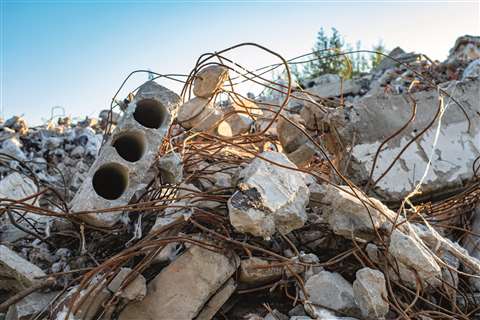Sustainability in construction
15 June 2022
Construction’s role in Europe’s transition to a circular economy, cannot be overstated, with opportunities and challenges ahead in equal measure. Mike Hayes reports.
The managing director of a Tier 1 construction company recently noted that the question most often asked of his company by new job candidates is ‘what are your policies on sustainability?’

While this is a positive reflection on the young people entering the construction industry, it’s also a concern as, in many instances, the construction industry does not have a positive answer to the question.
Given it is now seven years since the signing of the Paris Agreement on climate change, construction has a sustainability mountain to climb and a rapidly diminishing timeline in which to climb it.
There is, without question, a will to build structures according to circular principles. Furthermore, the European Union (EU) has established many initiatives to tackle the issue – including the ReCreate project, aimed at reusing deconstructed concrete elements in new buildings, and the European Circular Construction Alliance, bringing construction companies together to drive forward the circular construction agenda.
Nevertheless, it’s no easy thing for a construction company to wade through the mountains of websites and acronyms to find simple solutions to the problem of construction waste.
Many will opt for the ‘business as usual’ policy and wait for legislation from the EU to enforce change.
Time for construction to address carbon emissions
However, as Zsolt Toth of the Building Performance Institute of Europe recently told Construction Europe, “Climate mitigation is very much time dependent,” stressing that addressing carbon emissions in buildings over the next five to 10 years is essential.
“It will make no sense,” he said, “if we have very efficient buildings in 2050 – we will have already missed our target.”
 Zsolt Toth, co-author on the BPIE roadmap report (Photo: Zsolt Toth)
Zsolt Toth, co-author on the BPIE roadmap report (Photo: Zsolt Toth)
Asked directly whether he believes the goals set out by the Paris Agreement are still achievable, Toth said, “The window of opportunity is closing. The message is very simple: the urgency of action is there.”
The issue, of course, is simple (although the solution is not): shift from a Take, Make, Waste model to a Reduce, Reuse, Recycle model.
When buildings that can easily be expected to have a 100-year lifespan are constructed without sustainability principles in mind, they will clearly be a long-term source of greenhouse gas emissions.
Studies have shown that between 10% and 15% of building resources used are currently wasted, due to inefficient management operations.
Furthermore, construction and demolition currently contribute to between 25% and 30% of all untreated waste in the European Union.
Circular construction
Dave Cheshire, sustainability director with the engineering firm Aecom, spoke to Construction Europe recently to give his take on circular construction.
He said, “We’re trying to keep the value of our resources in flow. What happens in a linear economy…we dig stuff out of the ground, use it for a while, then it basically becomes waste.
“In the circular economy, we close that loop – you create something and retain the value of it through increasing its lifespan.
In terms of construction specifically, Cheshire says all buildings eventually have an end of life, “So what happens to it next? I think that’s really the key question, for everything we’re designing, everything we’re building.
“The vision of the future is that you could take buildings apart to allow them to be reconfigured – creating adaptable, flexible buildings that have prolonged life. But also, you can reclaim components of a building and use them elsewhere.”
 Dave Cheshire is the sustainability director with engineering firm Aecom. (Photo: Aecom)
Dave Cheshire is the sustainability director with engineering firm Aecom. (Photo: Aecom)
Cheshire has a favourite example of this principle in action, based on the raised floor tiles that are used in offices.
He says, “We’re ripping thousands of these out all the time, when we demolish buildings. They’re standard, 600-by-600-millimetre lumps of timber and steel, which are very hard to recycle.
“And there’s one organisation now that is taking these from demolition sites and remanufacturing them – cleaning them up, retesting them and re-warrantying them – and then selling them back, 20% or more cheaper than new ones.
“This is a great example of the circular economy approach, but also of having a broker enable that to happen, because if you don’t get the warranties, if you don’t get the volume of supply and you don’t get the quality, no one’s going to use them.”
STAY CONNECTED



Receive the information you need when you need it through our world-leading magazines, newsletters and daily briefings.
CONNECT WITH THE TEAM







